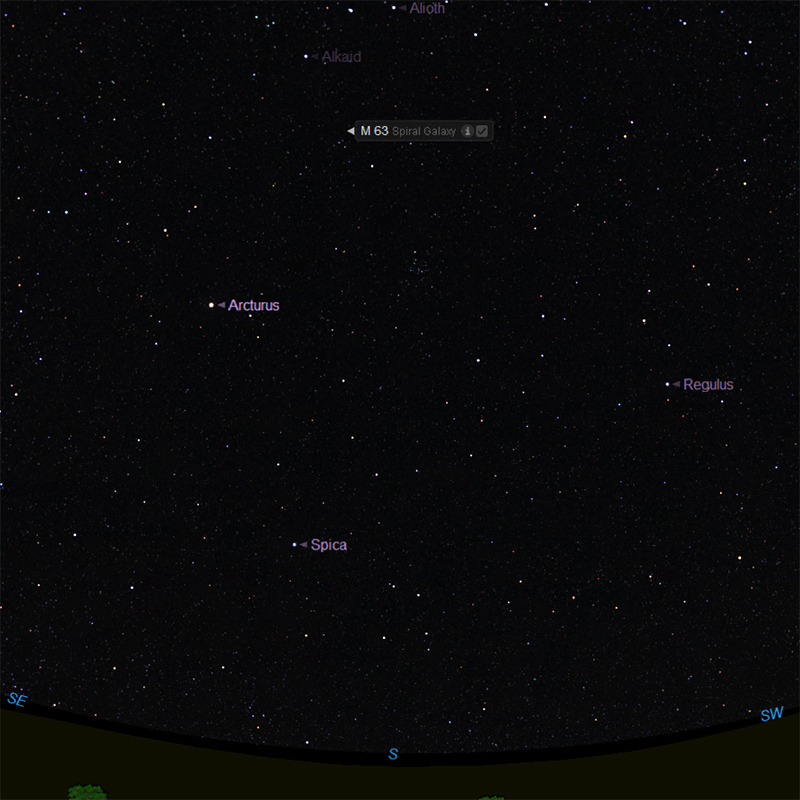M63 - The Sunflower Galaxy

Credits: Keith Turnecliff, Nerja, Spain
Messier 63 (M63), also known as the Sunflower Galaxy, is a spiral galaxy located in the northern constellation Canes Venatici.
The Sunflower Galaxy lies roughly 37 million light years from Earth and has an apparent magnitude of 9.3. Its designation in the New General Catalogue is NGC 5055.
Messier 63 is quite easy to find even though it lies in a relatively faint constellation.
It is located about two thirds of the way from Alkaid, the bright star that marks the end of the Big Dipper‘s handle, to Cor Caroli, the brightest star in Canes Venatici.
The Sunflower Galaxy can be seen in binoculars, but it only appears as a small, hazy patch of light or an out-of-focus star.
Small telescopes reveal it to be a galaxy, but do not show the details of its structure.
Medium and larger telescopes reveal the galaxy’s bright core and an oval patch of nebulosity around it.
The spiral arms can only be seen in 8-inch and larger telescopes, while the dust lanes appear only in larger instruments.
Facts about M63 by Keith Turnecliff
M63 was first discovered by the French astronomer Pierre Méchain, then later verified by his colleague Charles Messier on June 14, 1779. The best time to observe M63 is during May.

Best viewed with resolution 1920 x 1080.
Credits: Image courtesy of Starry Night Pro Plus 8, researched and implemented by Keith Turnecliff.